Directions (1-5): In each question below some statements are given followed by some conclusions. You have to assume everything in the statements to be true even if they seem to be at variance with commonly known facts and then find out which of the five given conclusions does not logically follow from the statements, disregarding commonly known facts.
Q1. Statements: Only a few jasmine are marigold
At least orchid are marigold
Only marigold are daisy
Conclusions:
(a) Some daisy are jasmine
(b) Some daisy are marigold
(c) All orchid are marigold is a possibility
(d) Some jasmine are orchid is a possibility
(e) All orchid can be jasmine.
Q2. Statements: No litchi is grapes
At least papaya are guava
All guava are litchi
Conclusions:
(a) Some papaya are litchi.
(b) No grapes is guava is a possibility.
(c) Some litchi are guavas.
(d) Some guava are not grapes.
(e) All grapes are papaya is possibility.
Q3. Statements: All moon are earth
Some planet are not sun
Some moon are planet
Conclusions:
(a) Some earth are planet.
(b) All sun are planet is a possibility.
(c) some sun is moon is a possibility.
(d) Some earth is not Sun.
(e) Some moon are earth.
Q4. Statements: Only a few cake are flavor
Some chocolate are cake
No chocolate is white
Conclusions:
(a) Some cake are not white.
(b) All cake is flavor is a possibility
(c) All white can be cake.
(d) Some flavor are cake.
(e) Some flavor is white is a possibility
Q5. Statements: Only a few Monday are Tuesday.
All Tuesday are Wednesday.
Only Wednesday are Sunday.
Conclusions:
(a) Some Wednesday are Monday.
(b) All Wednesday are Tuesday is a possibility.
(c) All Tuesday can be Monday.
(d) All Monday is Wednesday is a possibility.
(e) Some Wednesday are Tuesday
Directions (6- 10): In the following questions, the symbols @, &, %, $ and # are used with the following meaning as illustrated below:
‘P @ Q’ means ‘P is not smaller than Q’
‘P &Q’ means ‘P is neither greater than nor equal to Q’
‘P# Q’ means ‘P is neither greater than nor smaller than Q’
‘P $ Q’ means ‘P is not greater than Q’
‘P % Q’ means ‘P is neither smaller than nor equal to Q’.
Now in each of the following questions assuming the given statements to be true, find which of the three conclusions follow and give answer accordingly.
Q6. Statement: A % B # C % D $ E; G @ F % B
Conclusion: I. G @ A
II. A & G
(a) if only conclusion II is true.
(b) if only conclusion I is true.
(c) if neither conclusion I nor II is true.
(d) if either conclusion I or II is true.
(e) if both conclusions I and II are true.
Q7. Statement: R % T @ J % A $ S # H; I % T
Conclusion: I. H # A
II. H % A
(a) if both conclusion I and II are true.
(b) if only conclusion I is true.
(c) if neither conclusion I nor II is true.
(d) if either conclusion I or II is true.
(e) if only conclusion II is true.
Q8. Statement: C @ A % R & P @ W; A @ N # T
Conclusion: I. T $ C
II. T & P
(a) if only conclusion II is true.
(b) if either conclusion I or II is true.
(c) if neither conclusion I nor II is true.
(d) if only conclusion I is true.
(e) if both conclusions I and II are true.
Q9. Statement: P % T # D $ H @ S; H % N; T # G; H & M
Conclusion: I. G & M
II. P % G
(a) if only conclusion II is true.
(b) if only conclusion I is true.
(c) if neither conclusion I nor II is true.
(d) if either conclusion I or II is true.
(e) if both conclusions I and II are true.
Q10. Statement: N @ V $ R # M % I # K; F & M; V % C; R % D
Conclusion: I. N # C
II. D % F
(a) if only conclusion II is true.
(b) if either conclusion I or II is true.
(c) if neither conclusion I nor II is true.
(d) if only conclusion I is true.
(e) if both conclusions I and II are true.
Directions (11-15): Study the information carefully and answer the questions given below.
Eight persons A, B, C, D, E, F, G, H are sitting around a circular table facing towards the centre. They sell different stationery items i.e., paper, cutter, whitener, eraser, pen, marker, highlighter, sticker but not necessarily in the same order.
The one who sells cutter is not neighbour of the one who sells highlighter. F is not neighbour of G. Only one person sits between the seller of paper and cutter when counted from the right of the seller of paper. The sellers of pen and marker face each other. C sells stickers. B sells eraser and sits 2nd to the right of A. F faces E. The one who sells highlighter is 2nd to the right of the one who sells marker. The sellers of whitener and cutter face each other. Not more than one person sits between eraser and marker. D sits immediate right of A. H sits opposite to the one who sells eraser. H is immediate right of C.
Q11. Who among the following sells highlighter?
(a) H
(b) F
(c) C
(d) B
(e) none of these
Q12. Who among the following sits 4th to the right of the one who sits immediate left to the seller of Pen?
(a) E
(b) F
(c) C
(d) B
(e) none of these
Q13. Which of the following products is sold by G?
(a) marker
(b) cutter
(c) eraser
(d) highlighter
(e) none of these
Q14. Which of the following represents the immediate neighbour of the one who sells paper?
(a) E, G
(b) F, D
(c) C, H
(d) A, B
(e) none of these
Q15. Four of the following belongs to a group find the one that does not belong to that group?
(a) E- F
(b) G-A
(c) C-D
(d) B-H
(e) C-H
Solutions
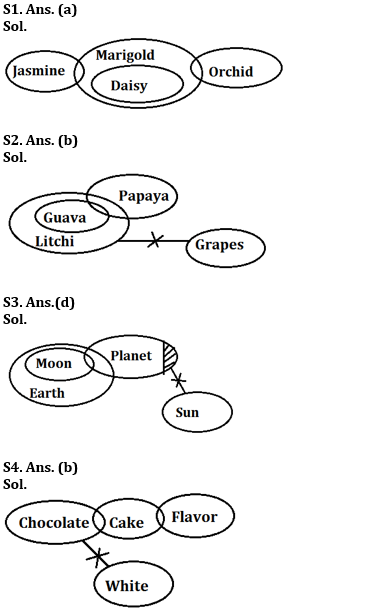
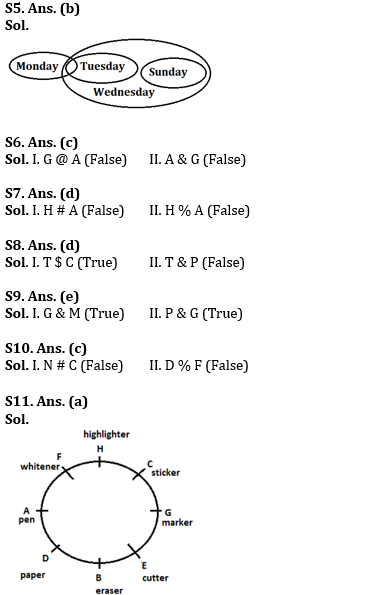
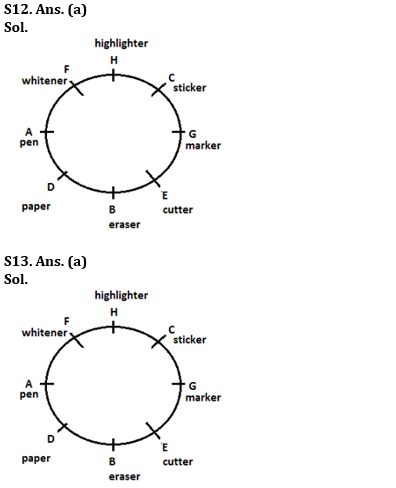
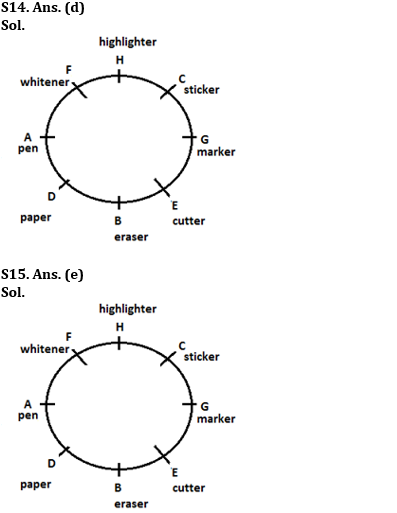


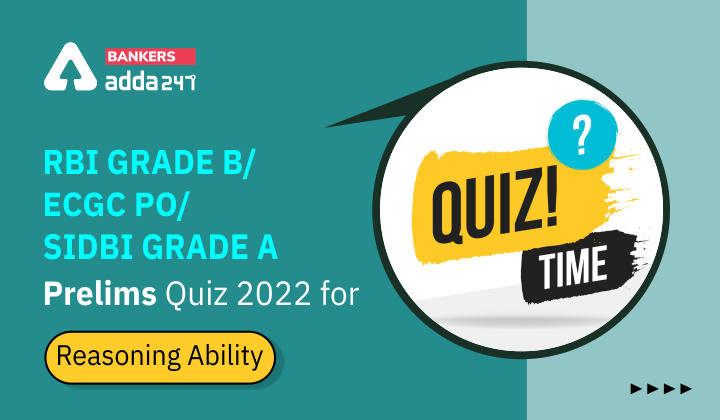








 GA Capsule for SBI Clerk Mains 2025, Dow...
GA Capsule for SBI Clerk Mains 2025, Dow...
 The Hindu Review October 2022: Download ...
The Hindu Review October 2022: Download ...
 SBI Clerk Syllabus 2025 and Exam Pattern...
SBI Clerk Syllabus 2025 and Exam Pattern...







